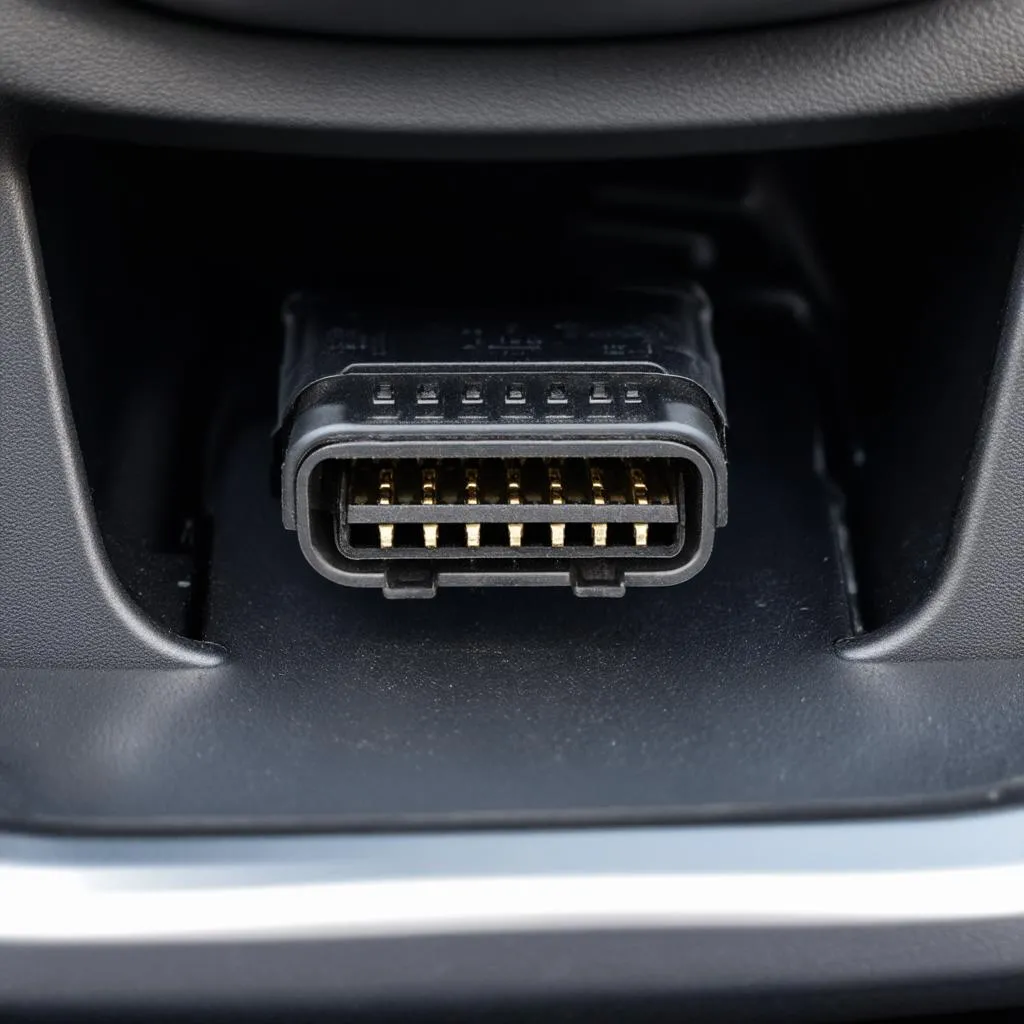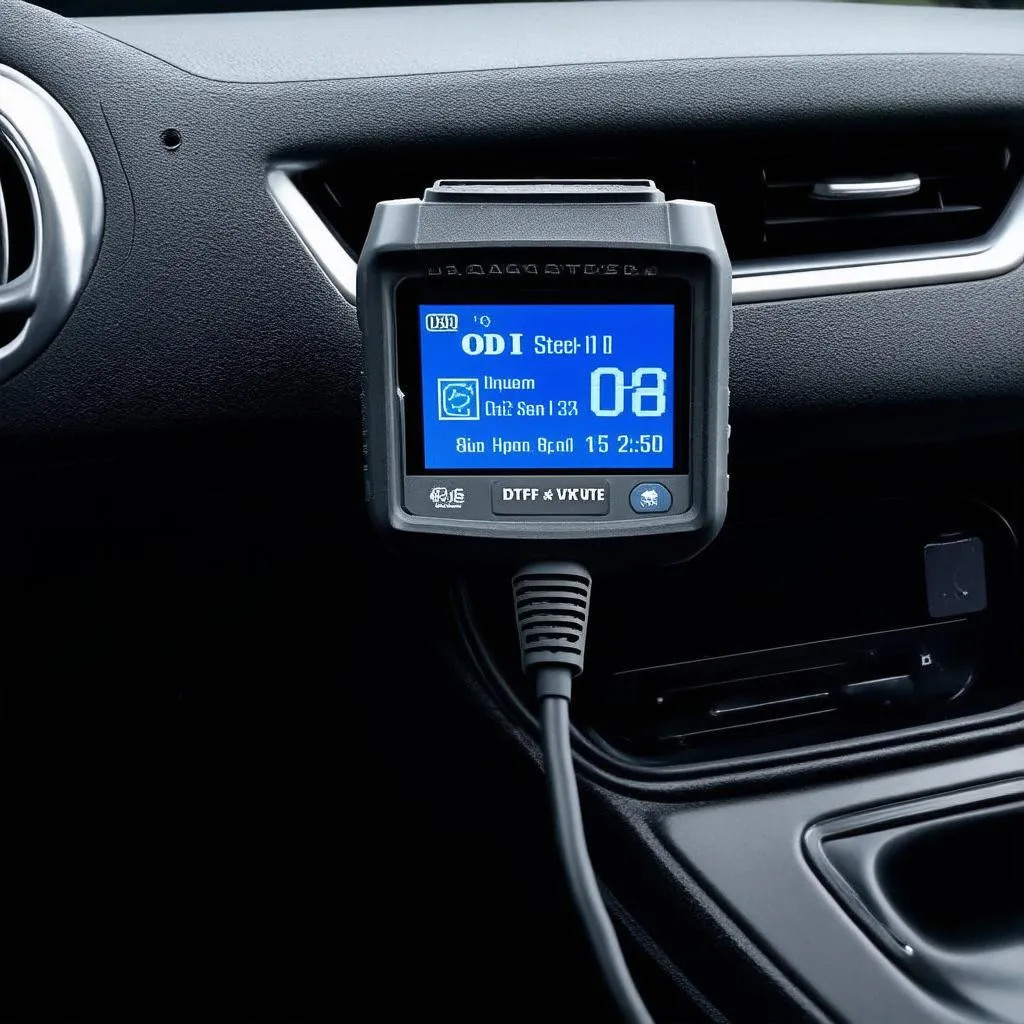Imagine this: You’re driving down a sunny California highway, top down, enjoying the breeze when suddenly, your check engine light pops on. You pull over, a little panicked. You know a little about cars, enough to check the OBD port, but then you see it… there are two different ports! What do you do? Don’t worry; we’ve all been there! Understanding the wild world of OBD ports can feel like learning a secret language, but fear not, because we’re here to decode it for you.
Unmasking the OBD Port: What Does It Do?
Before we dive into the different types of OBD ports, let’s take a step back. “OBD” stands for On-Board Diagnostics. Think of it as your car’s own personal health tracker. The OBD port, typically located under the dashboard on the driver’s side, acts as the communication point between your car’s computer (the Engine Control Unit or ECU) and a diagnostic tool.
“The OBD port is like a window into the soul of your car,” says automotive engineer, Sarah Williams, author of “The Car Whisperer: Understanding Your Vehicle’s Language.” “It allows mechanics and car enthusiasts to access vital information about the engine, transmission, emissions, and more.”
The Evolution of the OBD Port: A Tale of Two Standards
Now, let’s address the elephant in the room, or should we say, the two different ports under your dash. The reason for this automotive puzzle is the evolution of OBD standards.
1. OBD-I: The Precursor
In the beginning, there was OBD-I, introduced in the late 1980s. It was a simpler system, with each manufacturer often having its own proprietary connector and communication protocol. This lack of standardization made diagnostics a bit of a headache.
2. OBD-II: The Universal Language
Enter OBD-II in the mid-1990s, brought about by the need for a universal standard. This is the most common type you’ll encounter today. OBD-II brought with it a standardized 16-pin trapezoidal connector and a unified communication protocol. This meant that one scanner could theoretically talk to any car made after 1996, regardless of the manufacturer.
 OBD-II Port
OBD-II Port
Why the Different Obd Ports?
While OBD-II aimed for universality, some manufacturers, particularly European and Asian brands, stuck to their own variations. They might use the same 16-pin connector but with different communication protocols. This is where things get tricky.
“It’s like having different dialects of the same language,” explains Michael Chen, a veteran mechanic specializing in European cars. “The OBD-II connector might look the same, but the way the information is transmitted can vary.”
For instance, some Mercedes-Benz models might require a 38-pin connector for full diagnostics, while certain Volkswagens might need a specific adapter to access all their systems.
Decoding the Confusion: Common Questions Answered
1. What if I can’t find my OBD port?
- Check your owner’s manual: It will usually have a diagram showing its location.
- Look under the dashboard: It’s usually on the driver’s side, near the steering column or behind a small panel.
- Search online: Forums specific to your car model can be incredibly helpful.
2. Do I need a different scanner for Different Obd Ports?
- For standard OBD-II: Most generic OBD scanners will work.
- For manufacturer-specific variations: You might need a more advanced scanner that supports those protocols or a specific adapter cable.
 OBD-II Scanner
OBD-II Scanner
3. Can I use an OBD scanner on my older car?
- Pre-1996 cars: You’ll likely need a scanner and adapter specifically designed for OBD-I systems.
Navigating the World of OBD Ports: Some Final Tips
- Know your car: Research your specific make and model to see if it has any unique OBD requirements.
- Invest in a quality scanner: Consider your needs and budget. A basic scanner might suffice for reading and clearing codes, while a more advanced one can offer live data, graphing, and more. For more insights on selecting the right scanner, you can check out our reviews on FIXD OBD-II Active Car Health Monitor.
- Don’t be afraid to seek professional help: If you’re unsure about anything, a qualified mechanic can help. They have the experience and tools to handle different OBD systems.
Remember that understanding your car’s OBD system can empower you to take control of your vehicle’s health. It allows you to diagnose problems early, potentially saving you time and money in the long run.
And who knows? Maybe you’ll even discover a newfound appreciation for the complexities hidden beneath your dashboard.
Explore Further:
- Struggling with a stubborn OBD port on your Dodge Durango? We have solutions for you.
- Curious about using Arduino for OBD diagnostics? Dive deeper into the world of DIY car repairs.
Need help navigating the world of OBD ports or finding the right diagnostic tools? Don’t hesitate to contact us on WhatsApp at +84767531508. Our team of automotive experts is available 24/7 to assist you. Happy driving!